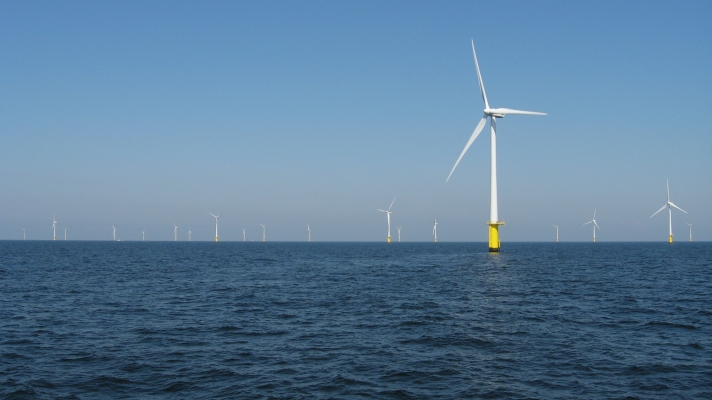The offshore wind energy is facing multiple challenges, such as bureaucracy, rising cost, a lack of standardisation, and a shortage of workers. That is why participants of the Offshore Day that took place on 15 June call for complexity reduction.
The Offshore Day, organised by Management Producties in Antwerp, Belgium, gathered representatives from both industry and government to discuss the challenges faced by the offshore wind industry. SWZ editor Björn von Ubisch visited the event and has provided an overview of the findings as can be found below.
Also read: Van Oord lands first job for new installation giant Boreas
Speakers and programme
At least two politicians (one Dutch and one Belgian) were among the speakers. In addition, a number of well-known offshore companies and other major players were represented, including Bureau Veritas, DEME Offshore, Thales, Eneco, Loyens & Loeff, Ørsted, SBM Offshore, TNO, TenneT, Gasunie, and VanBreda Risk & Benefit.
The programme was divided in two parts, wind and solar energy. The papers were as follows:
- Introduction by Renè Peters, TNO
- North Sea as a green energy source
- Road map for cross boarder cooperation
- Hydrogen and wind
- Floating solar panels
- Hydrogen in the North Sea, challenges and possibilities
Offshore wind too expensive
Offshore wind energy is becoming too expensive. Reasons for this are:
- Too much bureaucracy required by the authorities in the various states around the North Sea. Two of them are not even in the EU, which make any kind of coordination a hopeless task at present.
- There should be a tax incentive to invest in offshore energy.
- Lack of standardisation. Everybody is doing their own thing and at times “the wheel is being reinvented”. It was mentioned by Siemens that there are about 20,000 offshore wind turbines. They are all different in detail as there is no standardisation.
- Investors are hard to be found. They are all looking at North America where the bureaucracy is far less cumbersome.
- The energy providers say, we are the “paper pushers”, you, the industry, must do the work.
- The industry (represented by one company) says, that is very nice, but we as a company are at this moment 300 workers short to do the work we have contracted at present.
- There is a shortage of power transmission cables and ships capable of installing the high voltage cable on the seabed.
Also read: Netherlands and UK plan new subsea electricity link
Safety important
One statement that all agreed to was “Transition is not possible without transmission”. The supply chain is vital in order to have a safe and efficient operation. The Belgium Secretary of State from the Ministry of Energy also mentioned safety as an important subject.
Editor’s note: Maybe some politicians start to realise that the offshore wind farm industry is far from a “safe” industry compared to other equivalent offshore industries.
Producing hydrogen offshore
Hydrogen offshore means that a nearby wind farm produces energy for the electrolysing of seawater in order to produce hydrogen. This hydrogen can then be transported with the existing, redundant, gas lines to shore for storage and distribution. The hydrogen will then be used in hydrogen fuel cells for the production of energy that will power a vehicle or a ship etc.
Editor’s note: The existing redundant gas lines may release a significant amount of hydrogen to the environment due to leakage. This has to do with the small size of the hydrogen molecules. Methane molecules are much larger.)
Also read: EUR 3 million grant for floating green hydrogen/ammonia project
Floating solar at wind farms
The backers of floating solar energy are proposing to anchor floating solar panel rafts in between the monopiles in a wind farm grid. In this way, they do not take up valuable free water space. Tests have demonstrated that fish like to hide under the solar panel rafts.
The combination of solar energy with wind energy gives a total higher efficiency of the field because when one source is less efficient, the other source may be more efficient. The overall investment in the field will then have a shorter payback time.
The conference ended with the battle cry: ‘Complexity reduction!’
Also read: Heerema and Allseas to install 14 offshore platforms for TenneT








